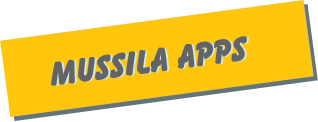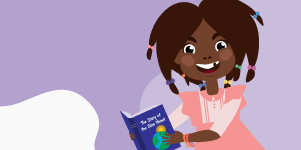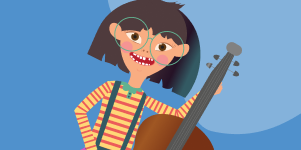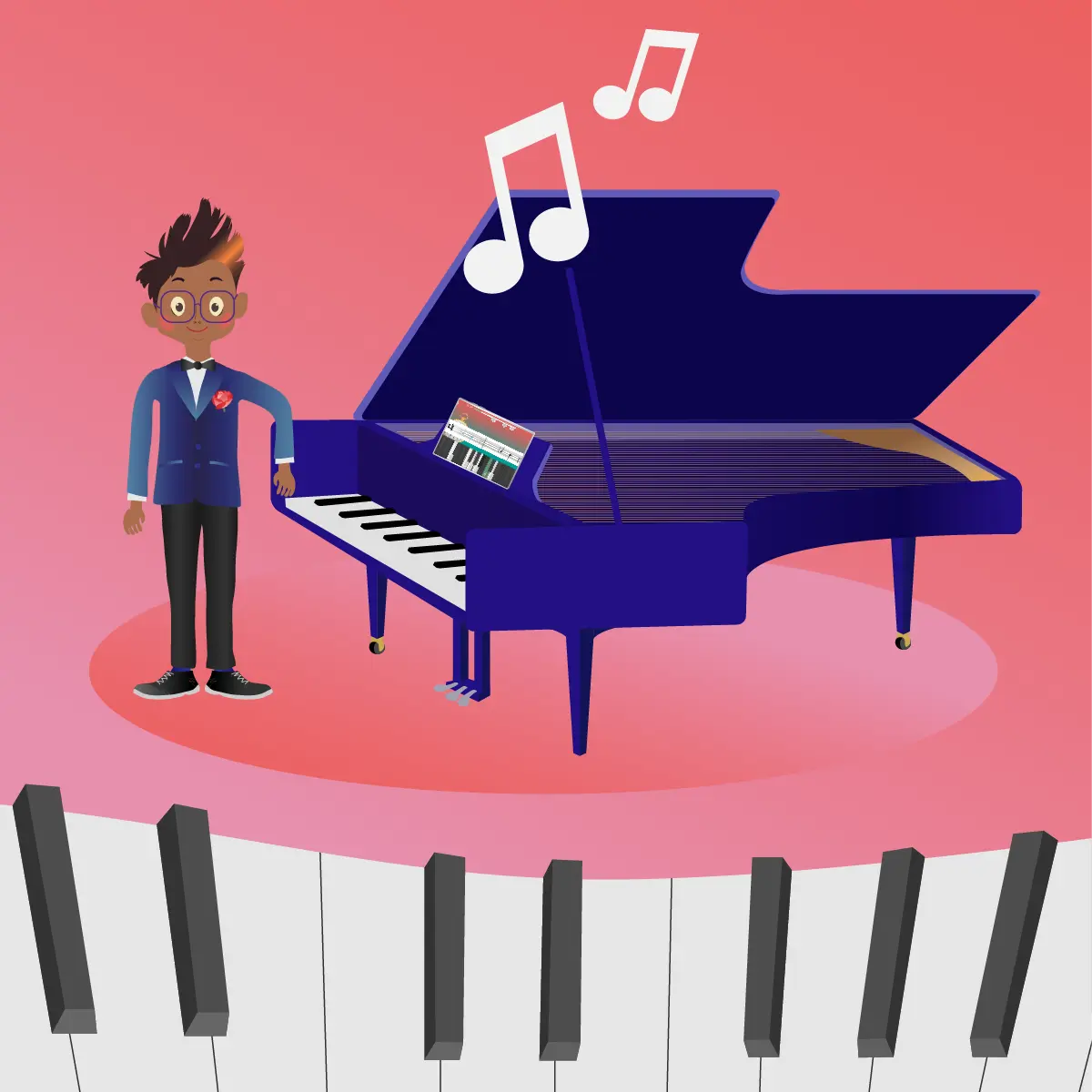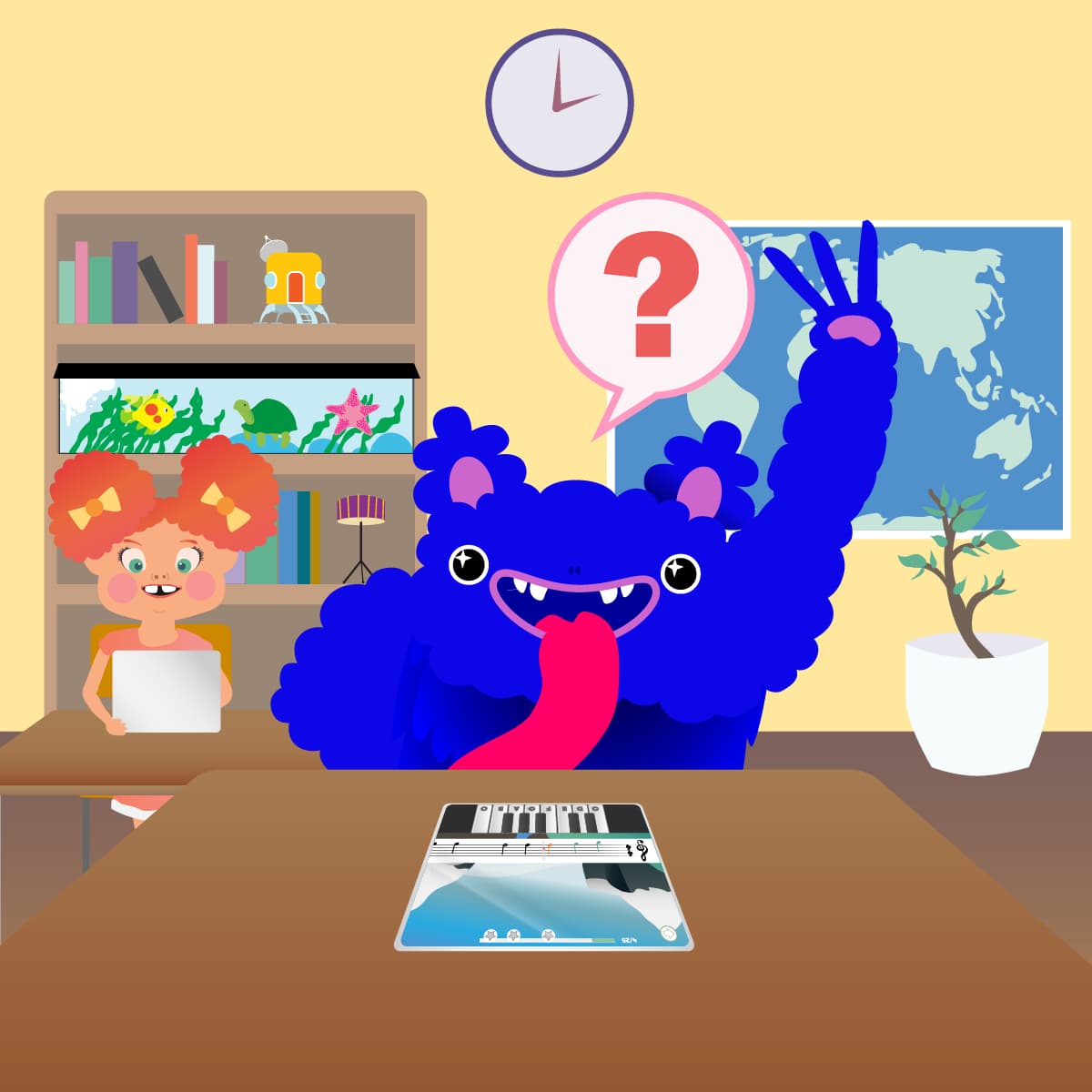By Arctic Meta,
Most people would love to be able to play the piano. It’s a skill that seems like it would make you popular at dinner parties, provide hours of entertainment and maybe even some interesting career opportunities in the future.
The piano itself is an instrument that can be associated with some of the most influential musicians the world has ever seen. From Bach to Gaga, the ability to take those black and white keys and turn them into music has astounded the masses for centuries.
The piano is an excellent foundational instrument to learn because it teaches a great deal of musical theory but also allows the student the reward of being able to create or replicate music in a relatively short space of time. The amount of depth someone can go into when it comes to piano tuition is almost limitless, so they can always keep learning.
Many students of the piano spend years perfecting their skills before they even dare to perform in front of an audience, some just pick up enough of the basics to accompany a song and use it to effortlessly wow spectators, but there’s a question many wonder and sometimes never get an answer to. Can you learn piano without ever learning to read music?
It’s an interesting question, so let’s dive in and find out.
Why is Reading Music Important?
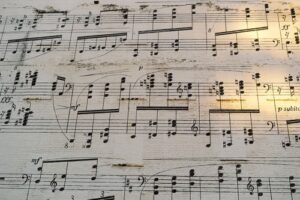
While it’s not the only important element when it comes to learning how to play the piano, the ability to read music does open a lot of doors.
Sheet music (as it is most commonly known) can be seen as a universal set of instructions for how to recreate a song. Written music doesn’t change between countries, so there’s no need to learn another language to be able to understand it. It’s a bit like mathematics. A note in a piece of piano music will be the same in English, German, Icelandic or Hungarian.
The biggest reason why reading music is seen to be an important step in the process of learning the piano is that learning to read it also teaches some important musical principles.
Someone who can read music will know about concepts like pitch, tempo, rhythm, harmony and many more.
The Disadvantages of Playing Piano Without Reading Music

In the past, learning to read piano music was often an expensive undertaking, and because of that, those who could read piano music were typically more upper class. This has changed dramatically in the past century.
Musicians began to make a name for themselves without ever being able to read a single musical note. Ray Charles and Stevie Wonder are both examples of accomplished pianists who were never able to read music (for obvious reasons). This might also come as a major surprise, but legendary film composer Hans Zimmer, the man behind some of the most iconic movie scores of the past 50 years like Interstellar, Pirates of the Caribbean and most recently Dune, has never learned to read music.
It is entirely possible to become an accomplished piano player without reading music, but there are some specific disadvantages that come along with it.
Locating Pitches
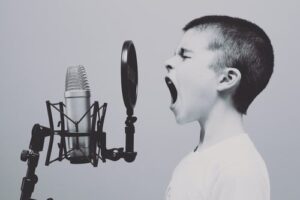
If a student is going to learn to play the piano without reading music, they will need to do it by relying completely on their ears. This is much more difficult because musical pitch is not the same for everyone.
Some people naturally have ‘perfect pitch’, which means that they can hear and replicate any note they hear exactly without fail. It’s incredibly rare, so this means that most people really need to train their ears extensively to be able to figure out what note they are hearing.
Building Harmonies
Harmonies are incredibly pleasing to listen to, and they’re actually more mathematical than artistic. Most harmonies in western music are formed by pairing notes together in multiple series’ of thirds. To put this in the simplest terms, take one note on a piano, then move up another three notes, and that should play well together with the original note.
It’s not impossible to form harmonies just by ear, but it’s certainly more difficult than it would be if a student had the ability to read music.
Learning New Songs to Play

One of the main reasons why any student wants to learn the piano in the first place is so they can eventually play music. Normally this process involves taking the written music, translating it into the notes and keys on the piano and practising until it can be played from memory.
Without reading music, this process is completely reliant on replicating sounds, which, although completely possible, is incredibly difficult and might lead to a student becoming demotivated by the difficulty of this task.
Developing Your Own Songs

Not every piano student wants to become a composer or songwriter, but if that is a goal for them, they might be limiting themselves a bit if they never learn how to read music.
Knowing how to read music gives a composer or songwriter an effective language to deal with. It opens up a variety of styles, chord progressions and combinations to create with that wouldn’t be possible if they were just playing by ear.
The Benefits of Learning to Read Music For Piano
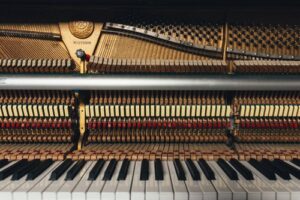
A student who never learns to read music might develop a keener ear out of necessity, but they will miss out on a lot of other things on their musical journey. Although it might seem like a lot of work, there are some major benefits to learning to read music for piano.
Not Relying On Learning by Ear Only

As stated earlier, playing by ear will heighten the ability of a student to determine notes or pitch from just listening but relying on just this does leave a lot of room for error. Learning to play the piano via this method also means that it’s the only way a student can play.
Learning to read music also gives a piano student a tangible value to put on sounds. They can see a ‘C’ note in a piece of music and know what it sounds like, whereas someone who only learned by ear knows the sound of something but might not actually know what note it is and how it relates to others.
Developing Your Musical Knowledge

The very first computers that were ever created were designed to solve complex mathematical equations. Over time their potential was unlocked, and now they do everything from automating traffic lights to making the special effects in Marvel movies.
Imagine for a moment what the world would have been like if computers had only been used for their original purpose. This same relationship can be carried over to the knowledge and potential that is unlocked when a piano student learns to read music.
Learning to read music requires a deeper understanding of how music is formed and what makes it so pleasing to the ears. By expanding their musical knowledge, a piano student eventually has a better idea of the full potential this instrument has.
Playing in a Band Or With Other Musicians

Anyone who has some level of musical skill can join a band and jam with other musicians, but someone who can read music will have a much easier time integrating into a music group.
Within a band, there are normally a variety of instruments. Each of them is played differently and sound different. The ability to read music can make it much easier for band members to communicate with each other.
Going to Rehearsals

In today’s world, there are an untold amount of benefits that come from having regularly scheduled events that involve leaving the house and meeting with other like-minded people.
As a species, humans have an innate need to belong and become a member of some sort of group has been shown to lift spirits, help with depression, and also teach young people the importance of sharing space with others.
Band rehearsals are also an incredibly important time for music students because it allows them to see that every single student has moments where they struggle, have an off day, or simply don’t get a particular piece of music.
Learning and perfecting a craft in a group setting creates an invaluable support network, and this is much more accessible to those who are able to read music.
Saving Time

Everyone has heard the saying, ‘Time is money.’ It can be for sure, but time is also a precious commodity on its own. The amount of time that can be saved for a piano student by simply taking the ‘time’ to learn to read music is astounding.
Learning to play something by ear is impressive. Those who manage to do it have achieved something very few people could ever aspire to, but the amount of time that goes into doing this is astounding.
When it comes to learning piano, by learning to read music, a piano student can potentially cut the amount of learning time in half.
The Disadvantages of Reading Music
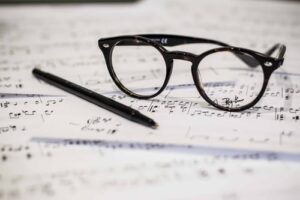
The debate on reading music vs playing by ear isn’t black and white. While there are some noted advantages of learning how to read sheet music, there are also some disadvantages to be aware of.
Not Developing Your Ear to Pick Up Music

Although perfect pitch is extremely rare, it is useful to be able to figure something out by ear without needing to see the music in written form. For many musicians, if they have spent a great deal of time learning how to read music, they can struggle to ‘feel a song out’ without the official guide (the sheet music).
It’s not the most severe disadvantage, but it can mean that a piano player isn’t able to be as spontaneous as they might like to be.
Reliance on Sheet Music
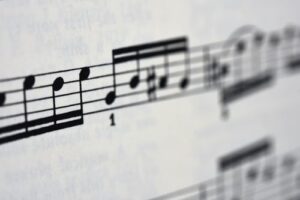
It is possible that a piano student who learns to read music will struggle to play without it in front of them.
This can be one of the most frustrating parts of playing the piano for those who read music.
The issue is that the ‘muscle memory’ of a song isn’t as strongly developed as it is for someone who plays by ear because if the music is available and a student knows how to play from reading, they never have to commit a song to memory.
Limits Creativity

This might sound like a bit of a ‘rock and a hard place statement’, but although learning to read piano music can unlock a lot of creative opportunities, it can also sometimes stifle creativity among piano players.
The problem is that a player can become so used to having a piece of music in front of them and playing it exactly as the composer intended that they never really explore what it’s like to improvise.
Should You Learn to Read Music or Simply Play by Ear?

Honestly, this is the proverbial ‘million dollar question.’ There’s no definitive answer; the main thing to focus on is what kind of learner is the person who wants to play the piano.
It’s certainly much more difficult to start playing simply by ear than it is to learn to read music, but some people respond better to that than they do to formal musical education.
Can You Just Learn Major and Minor Scales?

The major and minor scales on a piano are the basis for a great deal of technique when it comes to playing. A student can actually get surprisingly far from only learning the basic scales and not reading music.
The major and minor scales on a piano are enough to set up a student with enough knowledge to understand how most pop songs are formed. They also get a student used to the layout of the keys and how the octaves work.
Top Tips For Learning to Play Piano by Ear
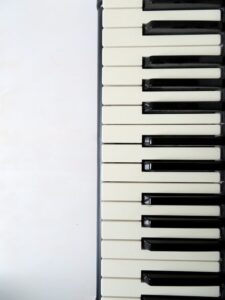
As stated above, learning to play the piano by ear isn’t the easiest thing to do, but there are a few hints to help a student get the most out of this method.
Learn Music in Segments

Break the piece down into smaller, more manageable sections. If it’s a pop song, begin with an easier part, like maybe the chorus, then work on the verses and then finish with the bridge or breakdown of the song. This way, the task becomes more manageable, and the student is able to see their progress which will be more rewarding.
Always Use Top Quality Recordings and Sound
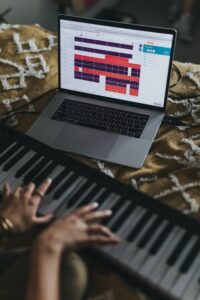
When learning piano or music by ear, it’s important to make sure the reference piece is of good quality. If the recordings being used are distorted in any way, it might make the process of deconstructing and matching the notes and pitch incredibly difficult.
Have the Sheet Music at Hand
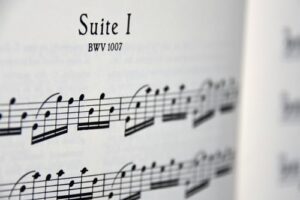
It might seem counterintuitive if a student is wishing to learn piano by ear to have the sheet music available, but it can actually be surprisingly helpful. Even though reading sheet music might not be the end goal, having the music can help a student determine how many notes are being played, how dramatic the shift in pitch is, and other information like tempo and time signature.
This is all information most people with a basic foundational knowledge of music can take from sheet music without needing to be able to read it completely.
Hum or Sing the Melody Out Loud
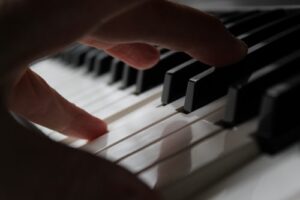
Humming or singing a melody out loud is a great way to fine-tune hearing for pitch. When a student hums or sings the melody, they imprint the note they are looking for in their memory. This also gives them a place to work from and assess if the key they are hitting on the piano is higher, lower or identical.
Top Tips For Learning to Play Piano by Reading Music
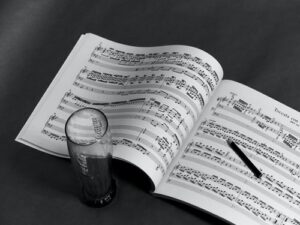
Learning to play the piano by reading music is pretty straightforward, but there are a few things you can do when you first start that will help you get the most out of your musical education.
Learn the Musical Alphabet
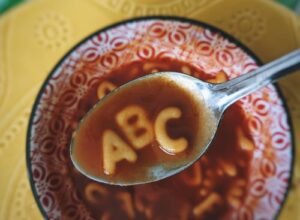
Just like learning to read words, there’s an alphabet in music that is integral to learning how to play the piano. The musical alphabet stands for different notes in an octave. In english, it starts at A and ends with G, then begins again. This is why you will see a pattern on a piano of 2 and 3 black keys.
Learning the musical alphabet will unlock a deeper understanding of how a piano works and how to get it to do exactly what the student wants.
Test Yourself Regularly

In the beginning, it’s great to stick to simple pieces that aren’t too difficult to tackle. This can keep a student motivated because they get the reward of being able to play. It’s also good to set challenges; look for tougher pieces and see what it takes to crack them and add them to a repertoire. This will help a student to progress faster and also limit the dreaded plateaus that everyone experiences on their musical journey.
Read Sheet Music While Listening to Songs
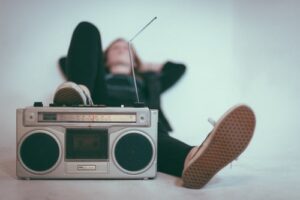
One of the best things to do to enhance the ability to read sheet music is to do it while listening to a song. For many students, it can be great to find the sheet music of their favourite songs and read along as the music plays. It gives them a whole new way to deconstruct their favourite music while also strengthening an important skill.
Set a Regular Routine

Most people have heard this before, but consistency is key. Developing a routine that includes regular musical instruction, practice and discipline will set any piano student up for success. It takes a long time to master something, and the sooner it is incorporated into a timetable, the sooner a student will be on the path to mastery.
Conclusion
There are as many opinions on how to learn piano as there are songs that can be played on one. Probably one of the most important things for any piano student is making sure they are having fun while they’re learning.
Fun and play are incredibly important components of any educational stream. Without them, it’s very difficult to motivate and inspire students to learn more, try harder and commit. This is where the Mussila Music School can become a handy tool for both parents and teachers.
Mussila combines technology, musical education and play into an award-winning application that makes music theory both fun and accessible. The best part about Mussila is that it doesn’t require adult supervision, so kids using it can learn on their own.
And, what’s even better is you can now take advantage of the Mussila family account which allows you to have more than one child under the same account. After all, music should be fun, accessible, and full of of wonder and enjoyment – even better if we can spot the next Beethoven.
If you’d like to find out more about how the app works, click here.



